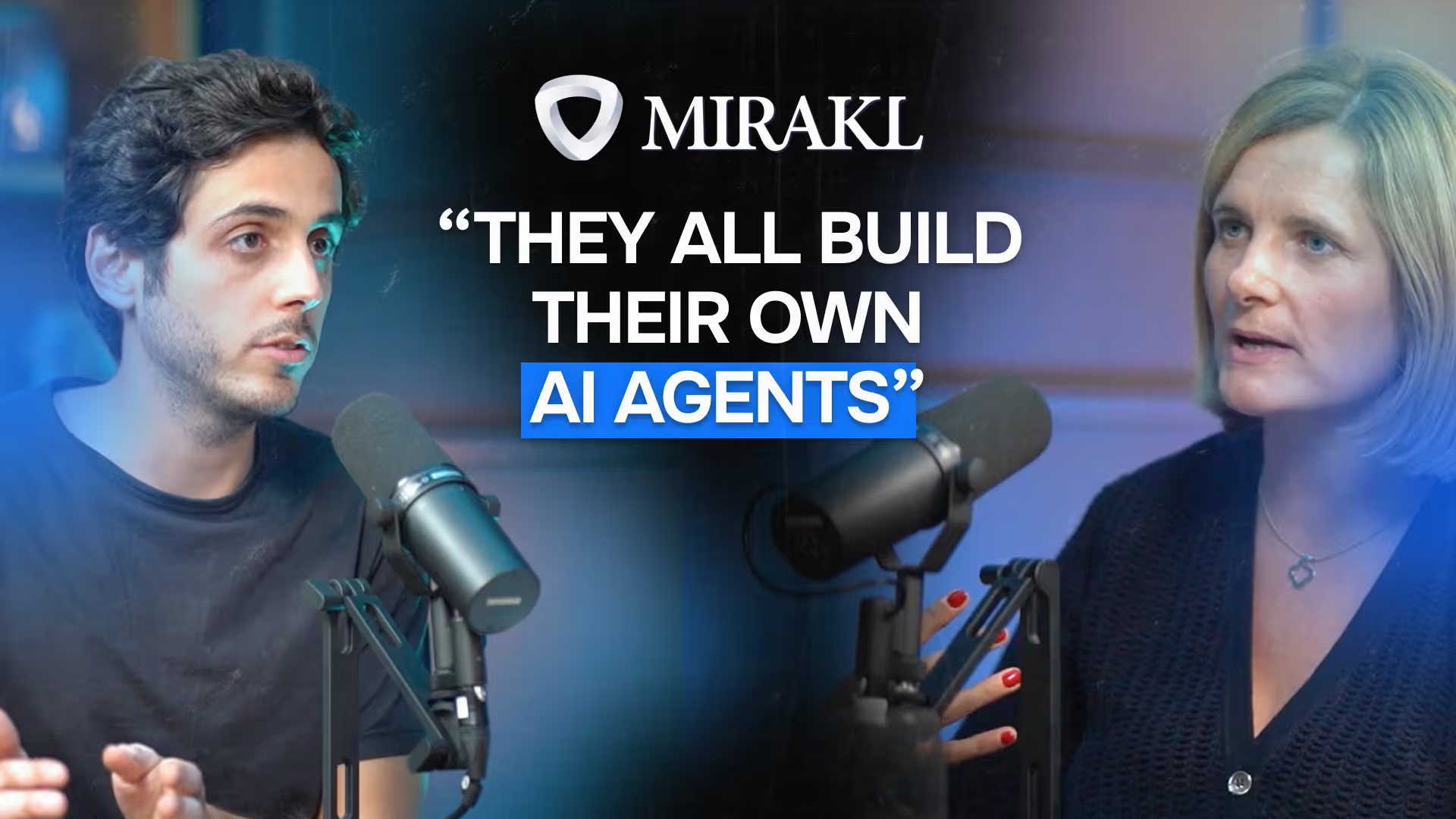
How AI is transforming billing and revenue management
Billing is one of those things you never see — until it breaks. Behind every subscription, credit, and usage adjustment lies a complex web of data that can make or break a SaaS company’s operations. That’s the world Lucas Bédout, founder and CEO of Hyperline, decided to reinvent — by putting AI at the heart of financial workflows.
Published on :
October 15, 2025
The origin of Hyperline: rebuilding billing from scratch
Founded in 2022, Hyperline was born out of frustration.
“We had used every billing software on the market. None were flexible enough. So we decided to build our own.”
The goal was clear: to centralize everything related to billing — subscriptions, quotes, contracts, payments, usage-based pricing — into one unified and intuitive platform.
Today, Hyperline serves over 250 clients across France, the UK, and the US, positioning itself as a modern alternative to legacy players like Chargebee, Zuora, or Recurly.
Building for the long game
Unlike startups chasing hypergrowth, Hyperline has taken a long-term approach to product building.
“We’re building deterministic workflows. A quote must be valid, legally binding, and the invoice must be 100% correct. You don’t do that in six months.”
In a world obsessed with “move fast and break things,” Lucas advocates for craftsmanship in SaaS — building strong, stable foundations instead of piling on features.
The result is a robust, reliable architecture and a product that clients can trust to handle their most sensitive operations.
AI as a reliability layer — not a magic wand
Hyperline doesn’t use AI to replace humans. It uses it to make processes more reliable.
“There’s no world where a large language model generates your invoices. That’s nonsense — an invoice is a legal document.”
Instead, AI is deployed where it adds the most value: verification and monitoring.
Thousands of small checks that are tedious for humans — but critical for accuracy — are now handled by intelligent agents.
“We use LLMs to spot anomalies: a client suddenly consuming more, an inconsistent invoice, a misplaced discount. These are things you often miss when you’re short on time.”
These agents act as a supervision layer, detecting and classifying issues by severity, and surfacing them in a unified dashboard.
Finance teams can finally focus on what matters: decision-making, not data triage.
Billing and AI: a market in transition
Hyperline has a front-row seat to how AI is reshaping pricing models.
Traditional approaches — usage-based or subscription-based — are being rethought as LLM costs fluctuate.
“Model costs are too high for pure usage-based pricing. Most companies are moving back to credit-based systems.”
That’s why Hyperline built a credit system directly into its platform.
Each action consumes credits based on its nature, and customers can easily adjust their usage as they grow.
“Today, 90% of our AI clients operate on credits. It’s simpler, more transparent, and better aligned with their real costs.”
For AI-first companies, it’s the only model that makes economic sense.
Everyday AI: acceleration meets discipline
As a former developer, Lucas has seen firsthand how AI reshapes software development.
Yes, it speeds things up — but it also demands more discipline.
“We all had that moment of ‘wow, it codes by itself!’ until we realized quality was dropping.”
At Hyperline, tools like Cursor, ChatGPT, and Claude accelerated production, but also revealed the need for human oversight.
“Developers got a bit lazy — me included. We had to put guardrails back in place. AI assists, but it doesn’t ship.”
The team now uses AI for exploration, automation, and rapid iteration, while maintaining strict control over code quality.
Building fast, without breaking quality
AI has become a core driver of internal innovation.
Hyperline leverages tools like Lovable, V0, and Bolt to build mini-apps on top of its API — dashboards, migration tools, or client-specific automation.
“What used to take a month now takes two hours. We can ship a fully functional, custom reporting tool in a single afternoon.”
This agility allows Hyperline to innovate faster without bloating its core product — a rare balance in B2B SaaS.
Teams that supervise, not just produce
AI is also changing how Hyperline recruits and structures its teams.
“A developer today is twice as fast as before. What used to take a day now takes two hours.”
That doesn’t mean fewer people — it means different profiles.
Hyperline hires fewer juniors and focuses on experienced engineers who can maintain quality, review outputs, and teach others how to work effectively with AI.
“The risk isn’t that AI replaces people. It’s that we forget how to work well with it.”
The next frontier: the post-interface world
Lucas sees a much bigger shift coming.
AI isn’t just changing products — it’s redefining the entire SaaS model.
“If a model can read, navigate, and execute, why would you still need an interface?”
In his view, future systems won’t rely on dashboards or buttons.
Instead, AI agents will directly manage workflows, from billing to accounting, while humans oversee their performance.
“We won’t need SaaS as we know it. What remains will be the supervision layer — humans monitoring the agents.”
“SaaS is dead” — or simply evolving
For Lucas, this isn’t the end of SaaS, but its transformation.
“SaaS won’t die. It’ll evolve. We’ll need fewer people to monitor systems, but they’ll have greater responsibility.”
The real value will shift from automation to orchestration — designing, guiding, and maintaining intelligent systems rather than manually operating them.
And as Hyperline proves, this transformation starts where few expect it: with billing — the silent backbone of every business.
Explore more from Phacet
Unlock your AI potential
Do more with your existing resources using tailored AI solutions.



.avif)




